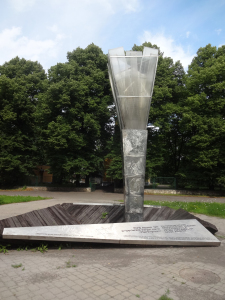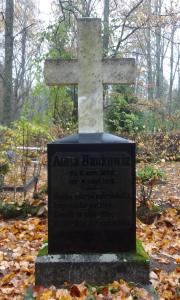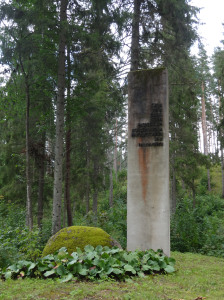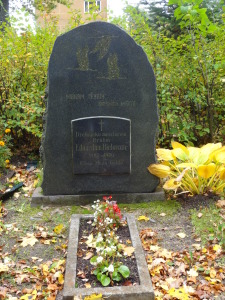Time for my second post on Finnic influences in Latvia – see the first one on place names here. This post was planned for last week, but then my laptop’s motherboard died, and since it would have cost so much to replace it, it was a better option to just buy a new computer. So I have, but I still didn’t have it on Thursday, so this post is coming out this week instead!
This week we are talking about Finnic influences on personal names in Latvia. Since Latvian and Finnic groups have been in close contact with each other for millennia, it only makes sense that there is some crossover when it comes to names. There are two parts to this post – given names and surnames.
Given names starting with “Ai” are quite often – though not exclusively – Finnic (specifically Estonian) in origin. One of the most common names of this type is the name Aina – while this is also a Latvian word (“view/scene”), it begins to appear in northern Latvia near the Estonian border, and since the name Aino is a popular female name in Estonia, I suspect that Aina as a given name comes from those roots instead of the Latvian word. The name Aino means “only” in Estonian. This fits with a family story that I have regarding the origins of my grandmother Aina’s name – while her family was from Krustpils, in south-central Latvia, apparently her aunt had worked as a nanny in the north for awhile, and that is where she heard of the name she later suggested to her sister, who used it for her second daughter.
Also in Ai- names originating from Finnic languages, we have Aiga (Livonian “aig” meaning “pike” or “aiga” meaning “shore”) and Aila (thought to be a Finnic variation of Alise). Eila can also be a related name, with roots originally in Norwegian.
The famous Latvian name Imants (masculine)/Imanta (feminine) is not of Latvian origins at all, but rather Livonian – from the “im” (wonder) + “and” (present). Another I-name, IlmÄrs, also has roots in Finnic, being part of the name of the blacksmith-sky god Seppo Ilmarinen, where “ilma” means “air”.
Other Latvian given names with Finnic roots include: Laine, Leida, Raivo and Taivis, and more! For more information on Latvian given names and their many different roots, you can look at LatvieÅ¡u personvÄrdu vÄrdnÄ«ca by KlÄvs Siliņš.
Switching to surnames, we see that most Finnic surnames in Latvia belong to Finnic families (usually Estonian) that then Latvianized. While we will get into more details about how and when these families came to be in Latvian territory, we will look at some of their names now – since being able to spot them could help tell you if you should be looking north of the border for your ancestors!
Any surnames that end in suffixes like -sÄrs (“saar”, island), -zeps (“sepp”, smith), -pÅ« (“puu”, tree) are a clue to their Estonian origins. These names are listed with Latvianized versions first, then Estonian spelling and meaning in brackets. Some examples: SavisÄrs (Savisaar, “clay island), SÅ«sÄrs (Soosar, “swamp island”), PÅ«zeps (Puusepp, “carpenter”), Kingzeps (Kingsepp, “shoemaker”), Putzeps (Pütsepp, “cooper”), KirsipÅ« (cherry-tree), SarapÅ« (hazel-tree), ŪnapÅ« (Õunapuu, “apple-tree”).
Names ending in -as are not common in surnames of Latvian origins, but be careful in terms of attribution: -as endings can occur both in Estonian and Lithuanian names. Some Estonian examples of names like this are Allikas (Allik, “water spring”) and Jurikas (Juurikas, “tree root”).
While some Estonian names based on trees and plants can appear in Latvia, such as Tams (Tamm, “oak tree”) and Kasks (Kask, “birch tree”), names based on animals are much more common, such as Ilves (“lynx”) and Rebane (“fox”).
Have you noted any other Estonian-based names in Latvia? Any other names that look Estonian that you would like me to take a look at and see if they might be? Let me know in comments!
This post is made possible by my supporters on Patreon. Sign up there to support my work and be the first to know about my new projects and products!






